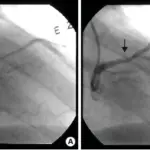Raynaud phenomenon is paroxysmal pallor or cyanosis and vasospasm to the fingers and toes and usually occurs in response to stress or cold exposure.
What is the Pathology of Raynaud Phenomenon?
The pathology of raynaud phenomenon is:
-Etiology: The cause of raynaud phenomenon is unknown, cold exposure association.
-Genes involved: Unknown.
-Pathogenesis: The sequence of events that lead to raynaud phenomenon is unknown associated with cold exposure.
-Morphology: The morphology associated with raynaud phenomenon shows pallor, cyanosis and hyperemia of the digit.
-Histology: Vasculature abnormality.
How does Raynaud Phenomenon Present?
Patients with raynaud phenomenon typically slightly higher in females at age range of 14 years old. The symptoms, features, and clinical findings associated with raynaud phenomenon include pain and numbness, pallor, cyanosis, hyperemia, digital ulcers, and calcinosis cutis.
How is Raynaud Phenomenon Diagnosed?
Raynaud phenomenon is diagnosed through clinical presentation. Imaging studies- MRI arteriography, thermography, and isotope studies. Laboratory tests such as CBC count, BUN, creatine level, prothrombin time, and activated partial thromboplastin time.
How is Raynaud Phenomenon Treated?
Raynaud phenomenon is treated through education, cessation of vasoconstricting agents. Pharmacologic therapy such as prostacyclin analogs and calcium channel blockers.
What is the Prognosis of Raynaud Phenomenon?
The prognosis of raynaud phenomenon is good.



